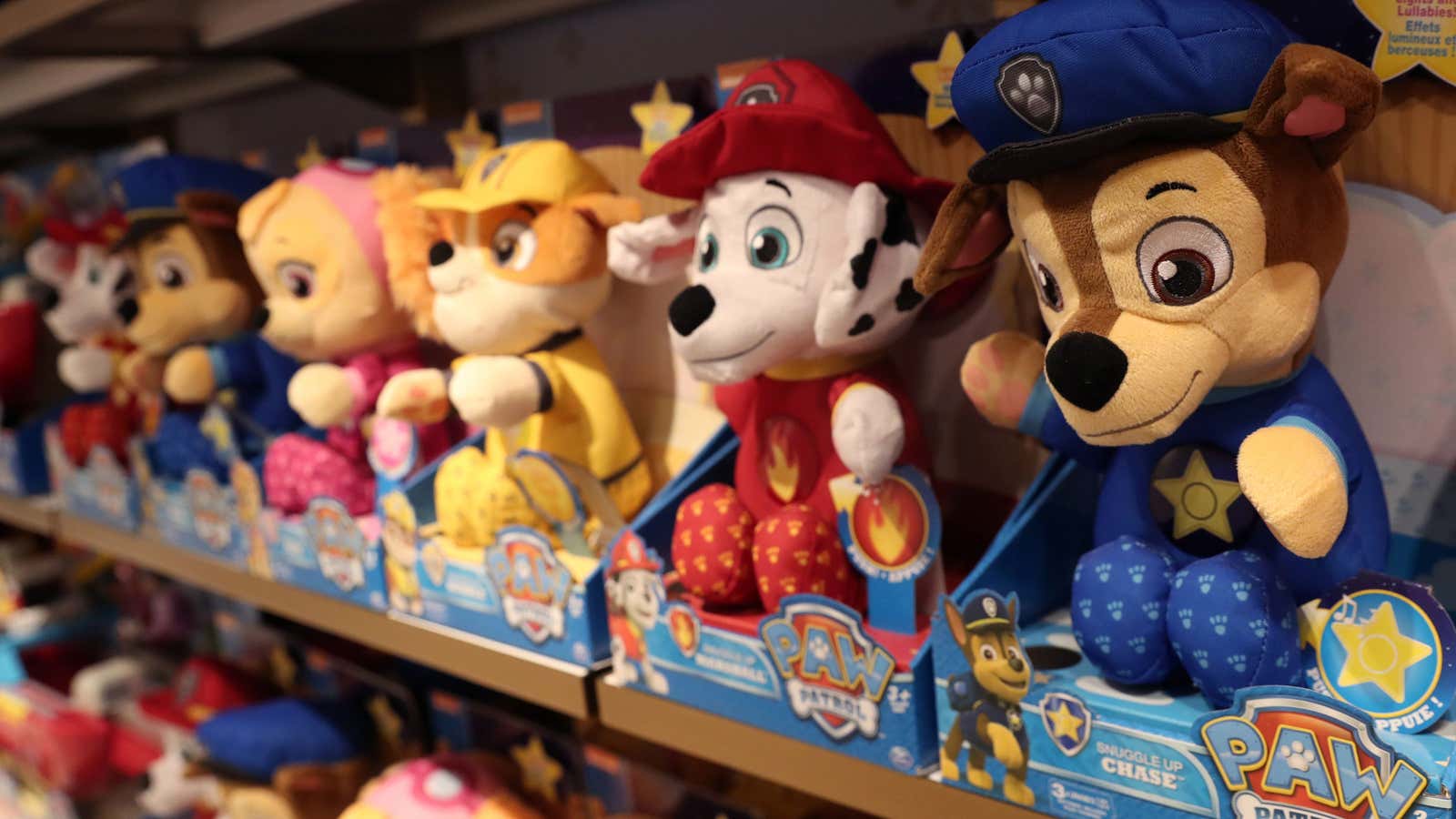Amazon is tinkering with toy-making ahead of the winter holidays.
TJI, a research site that keeps tabs on Amazon’s private-label brands, recently spied four product pages on Amazon.com for children’s toys from house brand AmazonBasics. The products included a five-piece soft “climb and crawl” play set, and a toy storage organizer.
Amazon removed three of the product pages shortly after TJI wrote about them on Dec. 10, TJI said in an update to its original post. The AmazonBasics kids’ toy storage organizer is still available, for $45, and with shipping availability of “1 to 3 months.”
Amazon didn’t respond to Quartz’s request for comment. Shares of toymakers Hasbro and Mattel fell in Dec. 10 midday trading, with Mattel ending the day down about 4%.
The e-commerce giant has intensified its push into private-label and exclusive items this year, with hundreds of labels like “Ruby Diva” (women’s tops), “Ah Goo Baby” (baby accessories), and “Alkove” (furniture). Amazon also started an “accelerator program” for private brands, inviting manufacturers to get in touch about creating merchandise exclusive to it.
Toys are a natural addition to Amazon’s portfolio. Amazon CEO Jeff Bezos set his sights on selling toys in 1999, back when Amazon was a mere bookseller and the company all but begged for permission to sell products from mass toymakers like Hasbro. (One early Amazon employee working on the toys initiative spent $1,000 at a Toys R Us in Manhattan, maxing out his personal credit card, to make Amazon’s inventory look more impressive for a press event, Brad Stone reported in his 2013 book on Amazon, The Everything Store.)
The company’s apparent move into toy-making follows the bankruptcy and liquidation of Toys R Us. In November, Amazon shipped its first-ever printed holiday toy catalog to millions of customers, mimicking the “Big Book” mailed by Toys R Us. The 64-page catalog included scannable QR codes for many products and featured about 80 items from brands like Lego and Nerf that were exclusive to Amazon. But none of the toys were made by Amazon brands.
